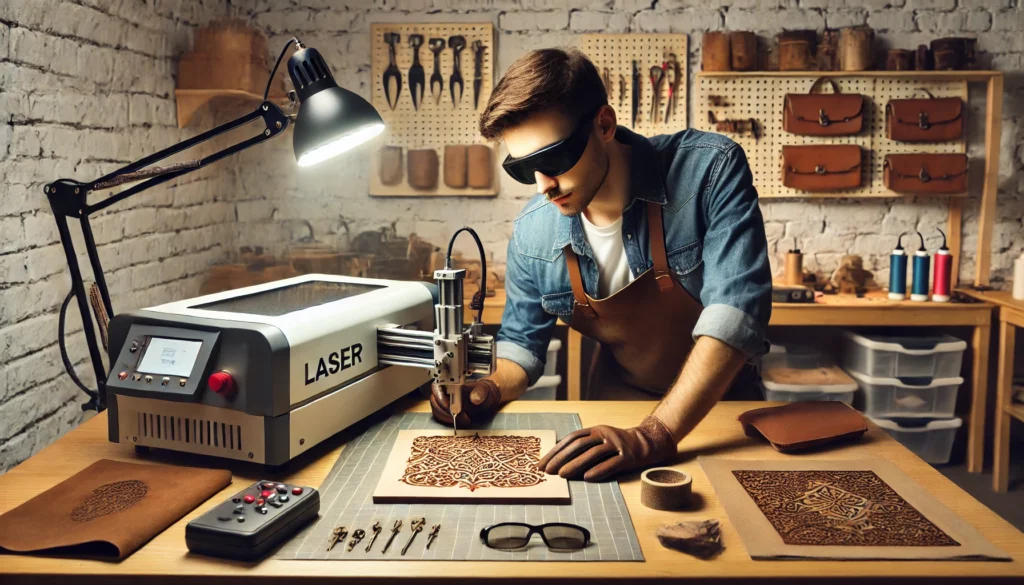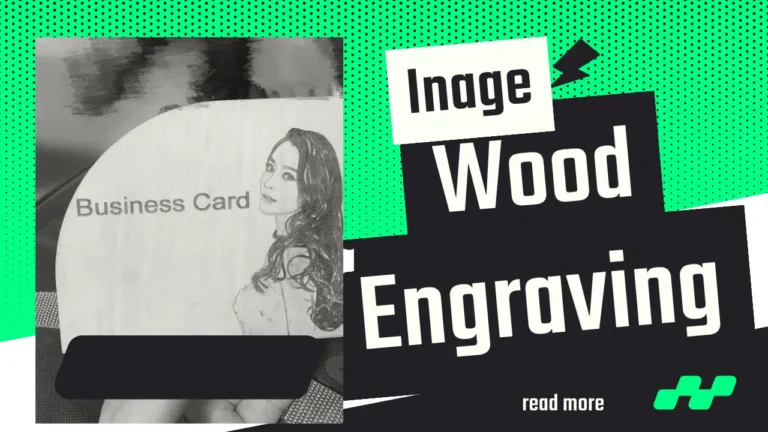Join Workshops
Physical Address
304 North Cardinal St.
Dorchester Center, MA 02124
Can you laser engrave PU leather?
Yes you can engraving PU leather but, materials like artificial leather, can be challenging engrave with precision.
If you’re considering laser engraving PU leather, you likely have questions about the best practices and settings.
Let’s address these concerns directly, offering solutions and guidance to ensure your projects turn out perfectly.
Key Takeaways:
- PU leather can be laser engraved but requires specific settings.
- Safety measures are crucial when engraving synthetic materials.
- Pre-testing on scrap material can save time and resources.
What Makes PU Leather Engraving Challenging?
PU leather, a synthetic material, differs from genuine leather in its composition. Made from split leather coated with a layer of polyurethane, it reacts differently under laser engraving.
The primary challenge is avoiding burning or melting the material, which can release harmful fumes and damage the surface. Understanding these nuances helps in setting up the laser engraver for the best outcome.

What Are the Best Practices for Laser Engraving Artificial Leather?
To achieve the best results, follow these tips:
- Use the Right Laser Settings: Adjust the power, speed, and frequency of the laser to find the sweet spot. Generally, lower power and higher speed settings prevent burning. For instance, a setting of 10-20% power and 80-100% speed works well for many PU leathers.
- Ventilation and Safety: Ensure proper ventilation. Engraving PU leather can release fumes that are hazardous. Use an exhaust system to keep your workspace safe.
- Pre-Test on Scrap Material: Before starting your main project, test your settings on a piece of scrap PU leather. This step helps in fine-tuning the parameters and avoiding costly mistakes.
How to set Perfect Laser Engraving Settings for artificial leather?
Achieving perfect settings involves a bit of trial and error. Here’s a step-by-step guide:
- Start with Manufacturer Recommendations: Begin with the settings suggested by your laser engraver’s manufacturer. These are often based on extensive testing and provide a good starting point.
- Adjust Incrementally: Make small adjustments to the power and speed settings. For instance, if the material is getting burned, reduce the power by 5% and increase the speed by 10%.
- Observe the Results: Check the engraving for precision and clarity. If the edges are clean and the design is sharp, you’ve likely found the right settings.
What Safety Precautions Should You Take?
Safety is paramount when laser engraving synthetic materials like PU leather. Here are some essential precautions:
- Use Proper Ventilation: Always engrave in a well-ventilated area or use an exhaust system to remove fumes.
- Wear Protective Gear: Safety glasses and gloves can protect you from potential hazards.
- Regular Maintenance: Keep your laser engraver clean and well-maintained to ensure it operates safely and efficiently.
- Use air assist: Make sure that your laser machine accompanies an air assist to provide better air support and blow the debris while engraving.
- Use masking tape: Use masking take over the leather workpiece to avoid over burning on the edges.
Why Is Pre-Testing Important?
Pre-testing is crucial because it allows you to:
- Identify Optimal Settings: Each piece of PU leather can vary slightly. Testing helps you find the best settings for each specific material.
- Avoid Waste: By perfecting your technique on scrap pieces, you reduce the risk of ruining your main project.
- Save Time: Fine-tuning settings in advance means less troubleshooting during the actual engraving process.
What Are Some Common Mistakes and How to Avoid Them?
Common mistakes in laser engraving PU leather include using incorrect settings, inadequate ventilation, and skipping pre-tests. Avoid these pitfalls by following the best practices outlined above. For example, always double-check your settings before starting and ensure your workspace is properly ventilated to handle any fumes.
How Does Laser Engraving Compare to Other Methods?
Laser engraving on PU leather offers precision and detail that other methods, such as stamping or etching, cannot match. According to a study by the Fabricators & Manufacturers Association, laser engraving can achieve a resolution of up to 1000 dpi (dots per inch), making it ideal for intricate designs.
Environmental and Health Considerations
Engraving synthetic materials like PU leather raises environmental and health concerns. The American Industrial Hygiene Association warns that the fumes from burning synthetic materials can contain volatile organic compounds (VOCs) and other hazardous chemicals. Therefore, using a well-ventilated area and protective gear is not just recommended but necessary.
How to Choose the Right PU Leather for Engraving?
Not all PU leather is created equal. When selecting PU leather for engraving, consider the following:
- Thickness: Thicker PU leather may require different settings and can be more challenging to engrave.
- Coating: The type of polyurethane coating can affect how the material reacts to the laser. Some coatings may burn or melt more easily than others.
How many types of PU leather are there?
There are three types of PU leather, each varying in quality, durability, and appearance:
Standard PU leather
This is the most common form, used in everyday items like shoes, bags, and furniture upholstery. It’s lightweight and easy to clean but may crack or peel over time.
Bi-cast PU leather
This type has a split leather backing covered with a PU layer. It’s glossier and has a more consistent texture but is less durable than top-grain or full-grain leather.
Microfiber PU leather
This high-grade type involves combining microfiber bundles with PU. It’s more expensive but also more durable and breathable, often found in premium products.
The main differences among these types of PU leather lie in their composition, manufacturing process, and intended use. Standard PU leather is your go-to for most budget-friendly items, while bi-cast PU leather offers a more uniform finish at a slightly higher price. If you’re looking for something that offers closer durability and breathability to genuine leather, microfiber PU leather is the best choice, albeit at a higher cost.
Conclusion
Laser engraving PU leather is entirely possible with the right approach. By following these tips and best practices, you can achieve detailed, high-quality engravings on artificial leather. Remember to prioritize safety, take the time to test your settings, and adjust parameters as needed for each project. Happy engraving!



